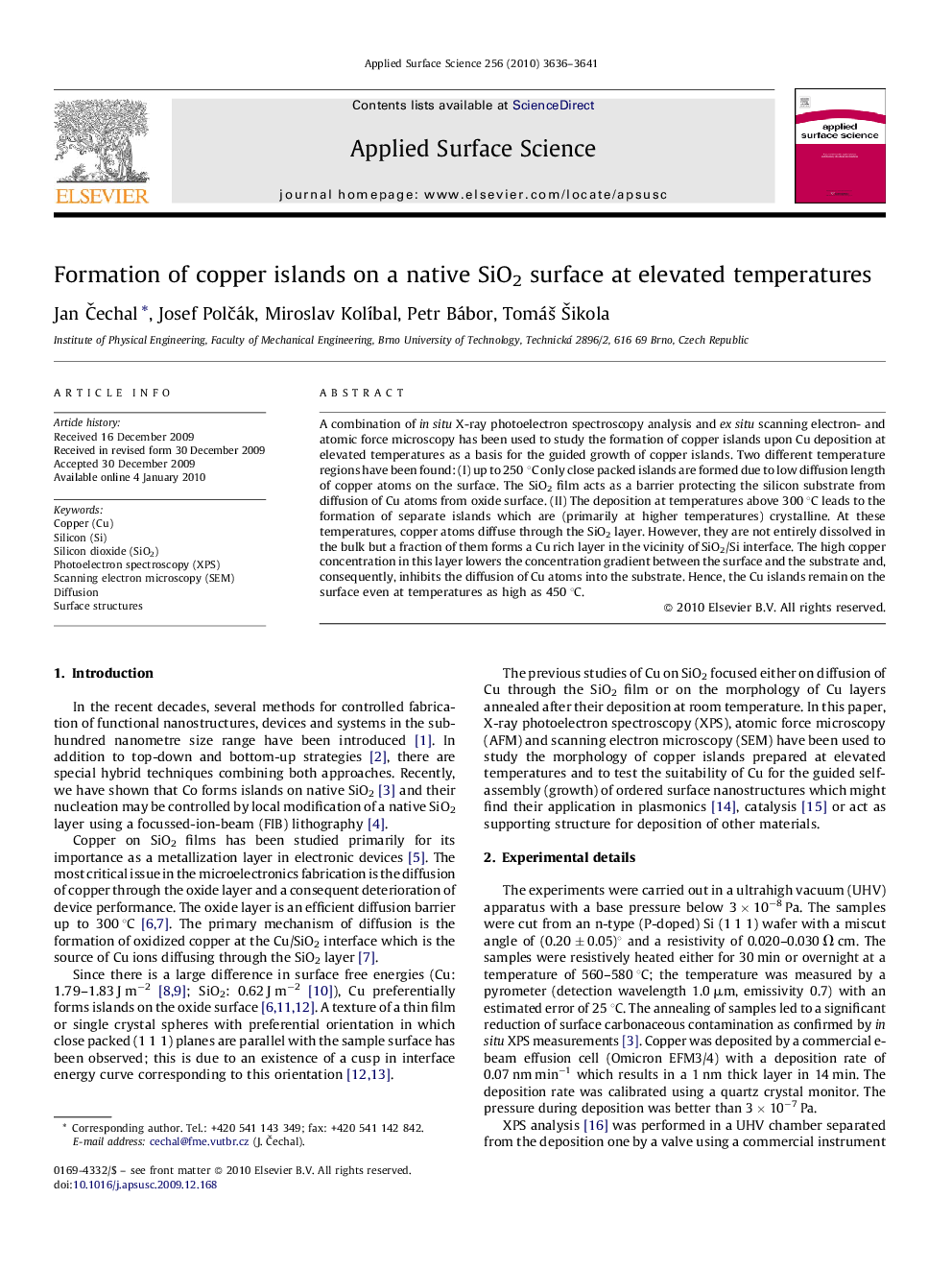| Article ID | Journal | Published Year | Pages | File Type |
|---|---|---|---|---|
| 5358475 | Applied Surface Science | 2010 | 6 Pages |
Abstract
A combination of in situ X-ray photoelectron spectroscopy analysis and ex situ scanning electron- and atomic force microscopy has been used to study the formation of copper islands upon Cu deposition at elevated temperatures as a basis for the guided growth of copper islands. Two different temperature regions have been found: (I) up to 250 °C only close packed islands are formed due to low diffusion length of copper atoms on the surface. The SiO2 film acts as a barrier protecting the silicon substrate from diffusion of Cu atoms from oxide surface. (II) The deposition at temperatures above 300 °C leads to the formation of separate islands which are (primarily at higher temperatures) crystalline. At these temperatures, copper atoms diffuse through the SiO2 layer. However, they are not entirely dissolved in the bulk but a fraction of them forms a Cu rich layer in the vicinity of SiO2/Si interface. The high copper concentration in this layer lowers the concentration gradient between the surface and the substrate and, consequently, inhibits the diffusion of Cu atoms into the substrate. Hence, the Cu islands remain on the surface even at temperatures as high as 450 °C.
Keywords
Related Topics
Physical Sciences and Engineering
Chemistry
Physical and Theoretical Chemistry
Authors
Jan Äechal, Josef PolÄák, Miroslav KolÃbal, Petr Bábor, TomáÅ¡ Å ikola,
